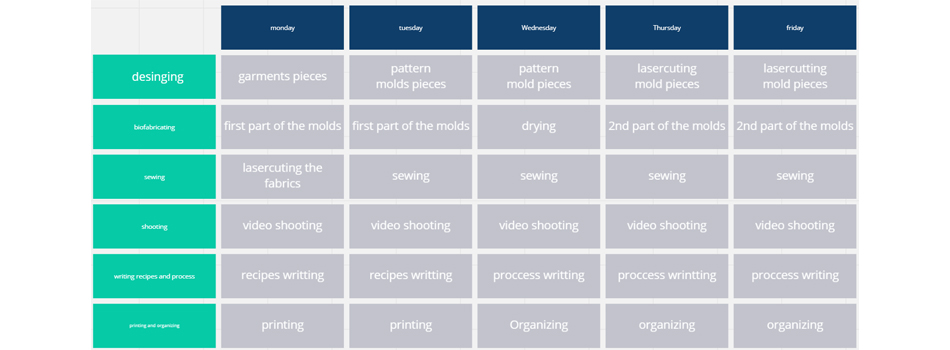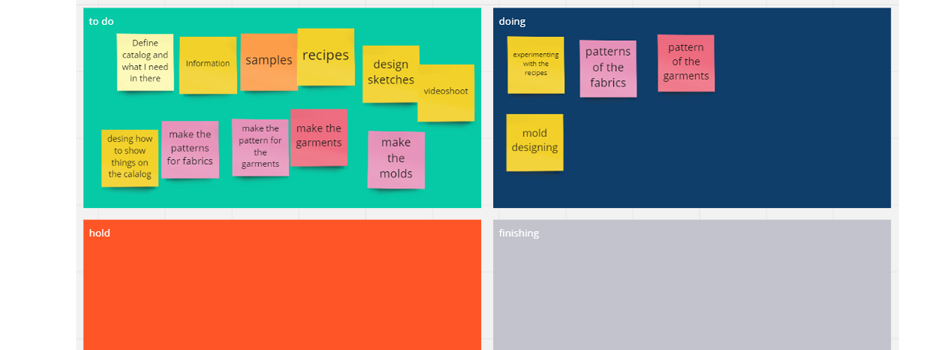Context, Logistics and Budget¶
Context¶
BRANDS DON’T EVEN KNOW WHO MAKES THEIR CLOTHES.
Too many fashion brands do not know in which factories their products are made and very few brands know from where the materials like zippers, buttons, threads, and even fabric come from. And they are not just brands and retailers, but rather numerous middlemen involved as well – wholesalers, agents, supply chain managers, and distributors. These are important and profitable parts of the industry that public does not actually notice.
WHY WE NEED TRANSPARENCY
Lack of transparency costs lives. Companies can not check if human rights are respected or environmental practices are implemented without knowing where their products are made.
That is why transparency is essential. Transparency means companies know who makes their clothes. At the very least, ascertain where they are stitched as a first step and further pass this information to their customers, shareholders, and staff. This is what Fashion Revolution is asking for. Knowledge, information, and honesty. That is why I think that manuals like this can help us as designers to determine the origin of materials applied, to be aware of our environment as well as our personal and ethical environment. The open-source principles that I apply in this manual will help us to transform the design industry community, facilitate its development and improvement.
Who¶
My exploration is a small guide for designers and the curious, my community. Where through my failures and successes I show that a world is possible where biodesign can be part of conventional design.
What¶
My main goal is to create a catalog where the curious and designers can find their recipe to start their explorations, repeat the recipes and replicate my designs. I also wanted to show that final products can be made using quite a few techniques, from the most traditional to the most technological.
When¶
This project started years ago with my desire to create something that has a way of designing that has the minimum footprint on the environment and to be able to create products that can be commercialized. So when I entered the fabricademy program I thought it was my place in the world and a fulfilled dream since I found the tools to become the designer I wanted to be. The initial exploration was in week 6 BioFabricating Materials where I discovered a quite surprising way to explore plants to create innovative materials, from this week I kept exploring more and more non-stop while we did the other assignments, until in January we started with the first mentorships that at that time Nuria Robles from Fablab Leon in Spain, who helped me channel the purpose of the project.
Why¶
Due to the need for independence from material suppliers, I as a designer can offer my clients the complete traceability of my product. Where they know where the materials and production come from and can even replicate the recipes, the parts and improve them.
Mentoring sessions¶
The first mentoring session was with Oscar Tomico on Implications and applications, where I was able to express my first ideas about what I wanted to do and my path, in addition to my first feedback with experts outside my background.
When we went on vacation in December, it was another opportunity to show and refine what I wanted to do and have more comments, there I already expressed the path I wanted to take and also the first time I expressed the biomass I wanted to use.
In a more individualized way, we went to a breakoutroom with Nuria Robles as a mentor and some colleagues where we expressed and talked about our project ideas. There, Nuria stirred up a lot of things, including better ways of documenting, and I realized that a book of recipes and processes It was necessary to condense all the exploration that I had in mind and, above all, to make it easy for the interested community to have a place to search for products and replicate or improve them.
For the following weeks I had the opportunity to speak with Angela Babour and Claudia Simonelli, where we talked especially about the stabilization of the colors of the samples that I had, since I was also able to discuss the biochemical processes with the knowledge that they had.
At this point I was already assigned the mentors who were officially going to accompany me and guide me during this process, which were Claudia Simonelli and Marina Castan, who were of great help to me since I have always been quite scattered and with many ideas at the same time. and they have helped me to have a guide and references to focus the exploration on the time and resources I had.
Unofficially my mentors from the node, who accompanied me and guided me from the beginning Adele Orcajada and Betiana Pavon who not only could guide me because of their proximity and were with me in person but also could guide me because of their great experience in the sector and they are great professionals with the biodesign.
Logistics¶
I think an exploration like this can help us as designers to learn where our materials come from as well as being aware of our environment as well as our personal and ethical environment.The open source principles that I apply in this manual will help us make the design industry a community that will help it grow and improve.

I have also made a wall of post-its that help me to know where I am going in the design process since although the calendar is done there are things that can be extended over time or some other things that I can advance and others that I have to wait and So I have a count and an order.

Budget¶
As a designer, it is difficult to choose, create and replicate the recipes during the exploration process. Thus I wanted to keep the ingredients simple, study what can I get from the minimal number of ingredients, and finally evaluate the impact of my product on the environment. Starting from just 3 ingredients, I was able to explore the potential of different combinations and component ratios. I obtained material samples and tested their versatility to bring to life the ideas that I had in mind. One of the main conditions that facilitated the simplicity of the materialformulations tested was the economy principle. As designers, we are conscious of our environment, as well as the budget. In my case, I needed to stick to 100€.
List os materials
- Acetate
- Cutter
- Jelly
- Glycerin
- Biomass from Phytoremediation
- Carrots
- Squid ink
- Laser cutter
- Sewing machine
- Torculum
And although I received invaluable support from the Basque Biodesign Center in the production process being able to use necessary facilities and machinery and get an expert evaluation of my work, I tended to stay within the frames of the budget. This was supposed to be a proxy of what my life would have been as a designer without the backing of this research institution. I tried to conduct my research independently relying on the suggestions and criticism of my colleagues and accordingly faced similar problems as an independent freelance designer. Here you will see an example of how you can conduct research at home with easily accessible resources and a fair budget. The budget was spent on molds, ingredients, and fabrics for the project. I exceeded the budget by 11€, which was a part of an experimental project. Overall, I was pleased with the final results and am satisfied with the overall budget and total pieces produced.
| Qty | Description | Price | Link | Notes |
|---|---|---|---|---|
| 1 | Acetato sheets | 1,95€ | Amazon | here you have a link but I boght it in a local shop more cheaper |
When I had already discovered how many variations of the same recipe gave me truly amazing results and that they could be used in even more ways than I had imagined, my imagination went to places beyond what I am used to.
| Qty | Description | Price | Total per sheet |
|---|---|---|---|
| 150gr | gelatine | 3,12€ | |
| 50ml | Glycerin | 0,70€ | |
| 3,82€ |
The independence of creating your own material and being able to apply it to everyday life is a pleasure that I had not felt before. My way of designing changed forever thanks not only to following some recipes, but also to the tools that I have learned to be able to take my exploration beyond a recreation but also to reach places that are little explored.
Throughout my life I have heard many times, That it cannot be done that way or that it is not possible to do it and I have always fought against the NO, only after having tried it can I know if it is possible or not.
| Qty | Description | Price | Link | Notes |
|---|---|---|---|---|
| 9 | Acetato sheets | 17,55€ | Amazon | here you have a link but I boght it in a local shop more cheaper |
| 1 | Gelatine | 20,80 € | Amazon | |
| 1 | Glycerin | 13,95€ | Amazon |